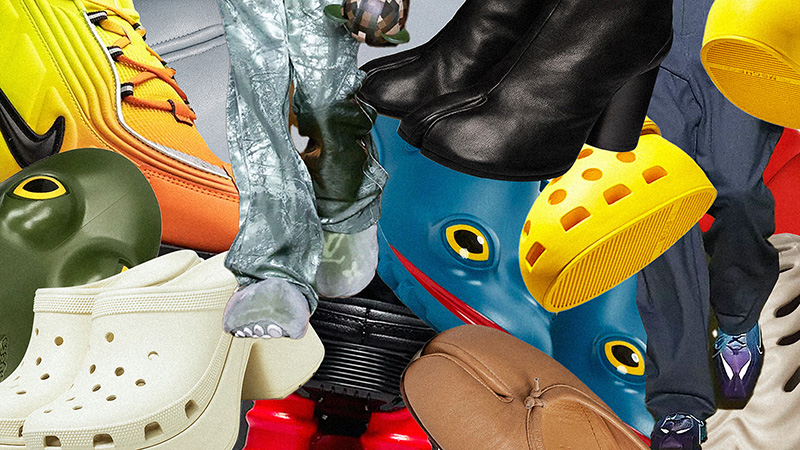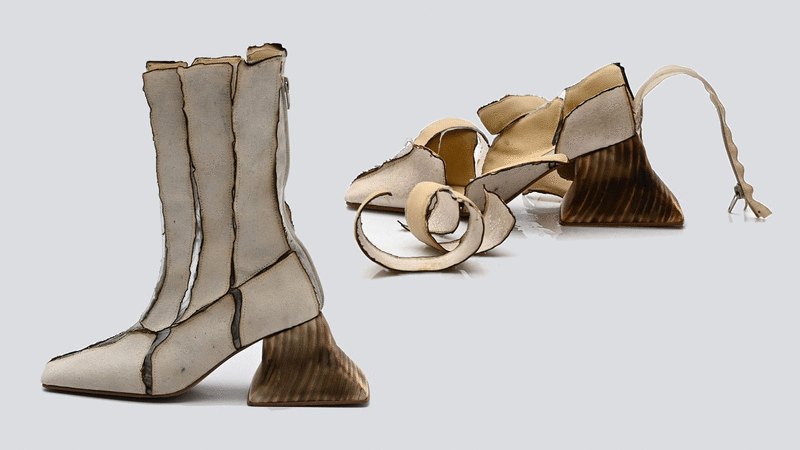Why 2023 Was The Year Fashion Fell For Ugly Shoes
“Are these the world’s ugliest shoes?” asked the Daily Mail back in 2013, in reference to a picture of Celine’s fur-lined Birkenstock-like sandal. A decade on, they might be an ugly icon, but they have a lot of competition. We are living through the Ugly Shoe Era – one where elegant or pretty footwear seems old-fashioned and anything that looks geeky, outlandish or weird is in.
Just this year, there has been the MSCHF ‘Astro Boy’ Big Red Boots – much-loved online when they were announced in February, the frog sliders on JW Anderson’s AW23 catwalk and the oversized fluffy monogram slippers worn by A$AP Rocky to the SS24 Louis Vuitton show. That’s not to mention the continued success of shoes once ridiculed as so ugly they would never catch on. See Crocs, a brand so successful that sales increased 23.5% from 2022, reaching $3.9billion. Then there’s Margiela’s Tabi shoes. The split-toe design – arguably the OG of ugly shoes, dating back to 1988 – was declared the hottest product between July and September by trend forecasters Lyst.
These designs follow favourites such as dad trainers and hiking sandals, and precede the rise of Martine Rose’s mule take on the Nike Shox, which British Vogue declared the “wonderfully weird” shoe taking over fashion week style earlier this year. But rather than these shoes staying within the confines of fashion editors’ wardrobes, they now have more reach. Katharine Carter, research and analysis manager at trend forecasting agency Edited, compiled a report earlier this year on ‘Ugly vs Minimalist’ footwear. “A striking finding was how the ‘ugly’ shoe trend has permeated every category, from sandals to flats and heels,” she says. “The movement has now firmly trickled down to the mass market.”
Carter believes that these shoes are particularly popular with Gen Z as a “platform for self-expression” (she mentions Jibbitz, the charms used to decorate Crocs, as an example). Journalist Faran Krentcil adds that it is also a reaction to a previous era when high heels ruled. “I remember at my first internship at a fashion magazine [in the ’00s]. The editors would say things like, ‘Heels are very strongly preferred,’” she says. “They would also say, ‘We prefer that you don’t use the elevator’, so we would be required to run up and down multiple flights of stairs in heels. This was The Devil Wears Prada era. The symbol of power [heels] very rarely got interrogated.” Krentcil argues that the shift to ugly shoes -– which are, typically, also a lot more comfortable – is about a different kind of power, that of agency. “We need shoes that can get us places,” she says.
Carter believes the pandemic had a part to play in ugly shoes becoming cemented into the current aesthetic. “Consumers sought comfort shoes [during this era] and their popularity has sustained post-pandemic,” she says. “‘Ugly’ shoes are a fun way for consumers to buy into different, bolder trends without committing to a whole new outfit.” She says the Wrong Shoe Theory, the TikTok trend for adding footwear that intentionally doesn’t match the clothes, is more evidence it will continue.
There is, of course, still the name. Krentcil believes it says a lot, if you think about it. “The stigma is still there [in society] that if we’re not willing to sacrifice our comfort, or our health, or ability to run, [we’ll be ugly],” she says. “It is ugly but it’s also the coolest thing you’re ever going to see… it’s an in-joke.”
Lauren Cochrane is senior fashion writer at The Guardian and author of The Ten




